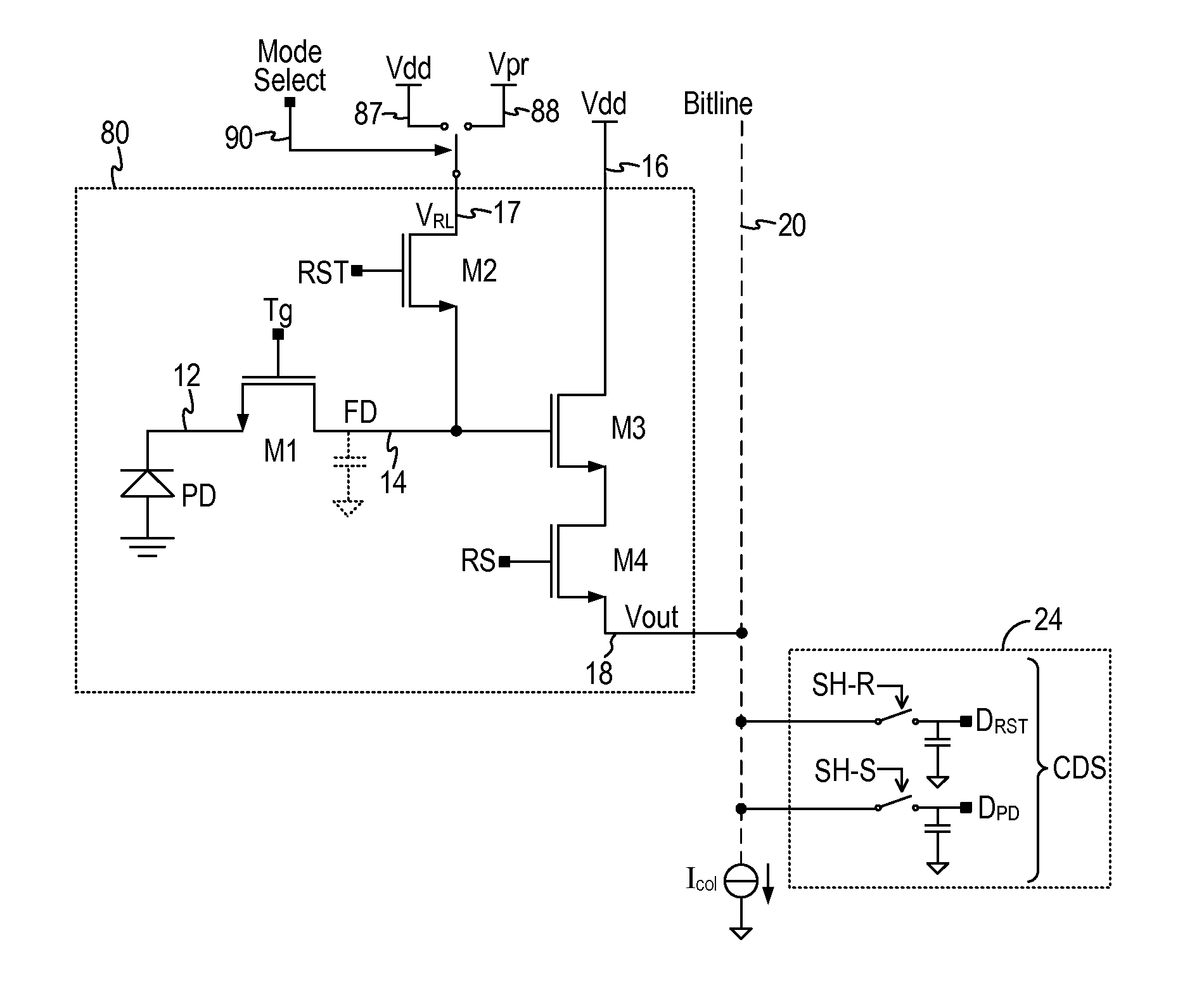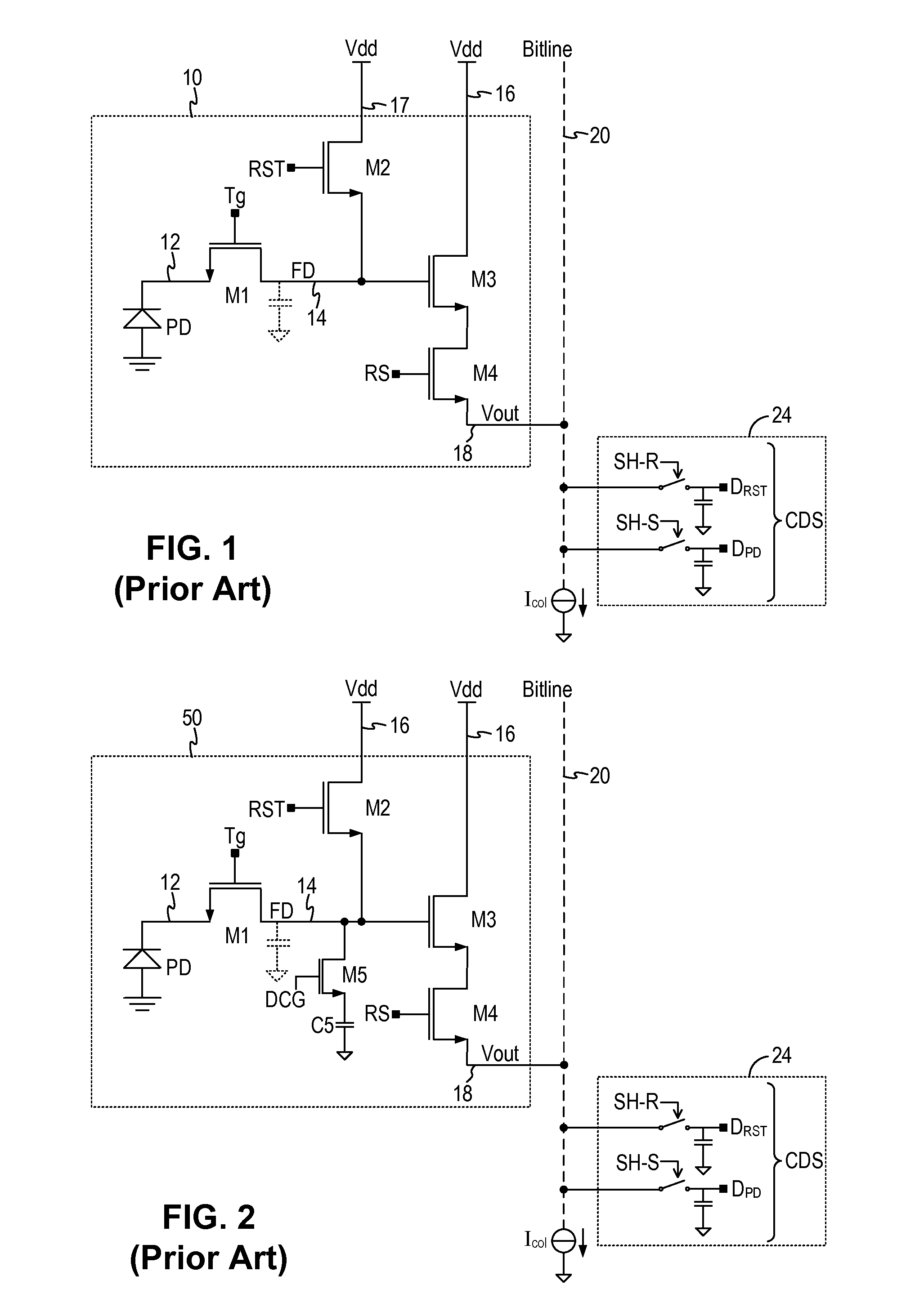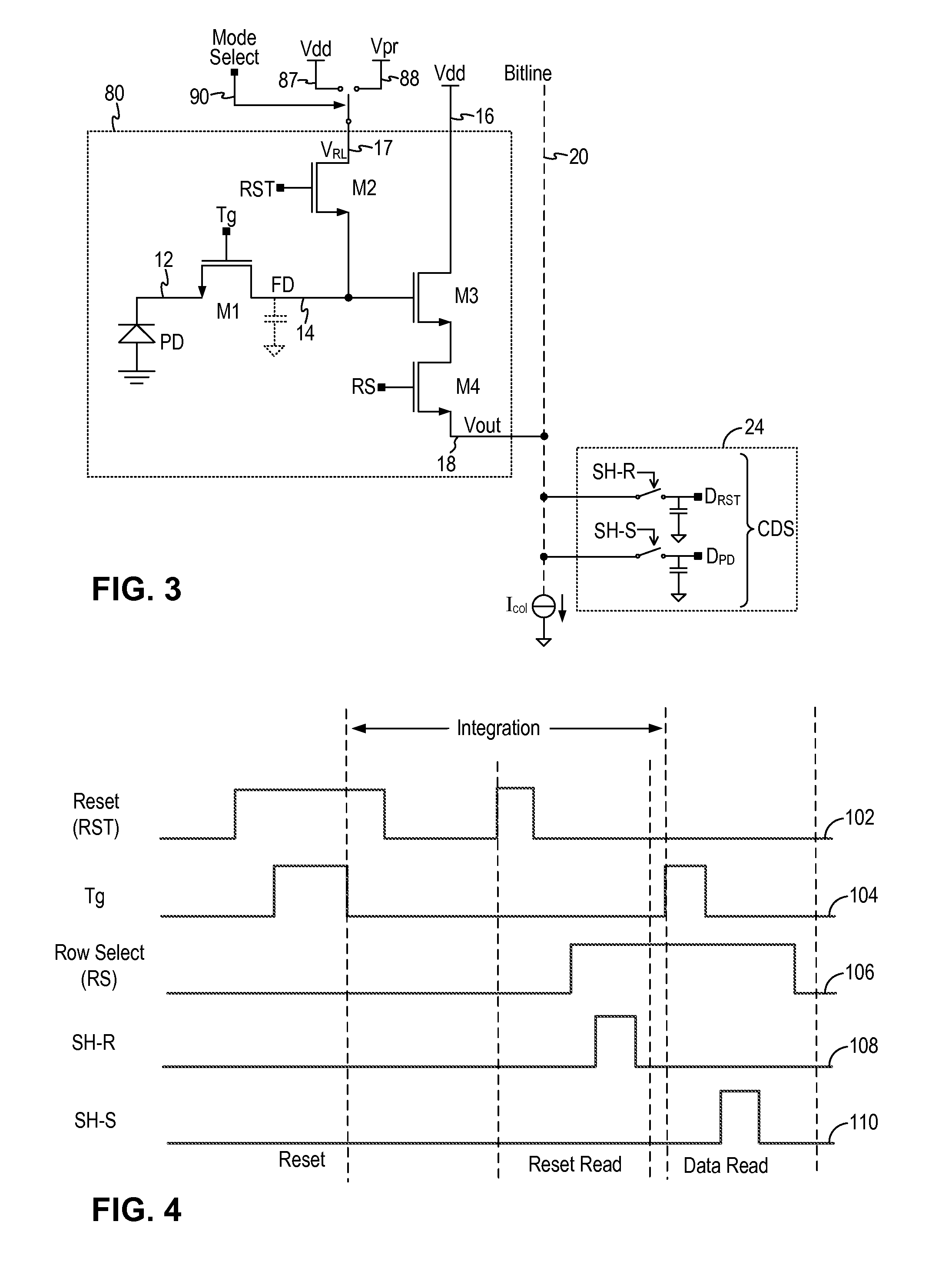Conversion Gain Modulation Using Charge Sharing Pixel
a charge sharing and conversion gain technology, applied in the field of image sensors, can solve the problems of reducing sensitivity, reducing pixel fill factor, and limited low light sensitivity, and achieve the effect of low conversion gain and high conversion gain
- Summary
- Abstract
- Description
- Claims
- Application Information
AI Technical Summary
Benefits of technology
Problems solved by technology
Method used
Image
Examples
first embodiment
[0052]In a first embodiment, a first CSM operating mode (Mode A1) is configured for single read out per frame with the transfer gate signal Tg set low during integration and set high during readout.
[0053]FIG. 8 is a timing diagram for CSM Operation Mode A1, utilizing single readout, with the transfer gate set low during the integration time according to one embodiment of the present invention. Under Mode A1 operation, a partial reset is performed by asserting the reset signal RST (curve 102) to turn on the reset transistor and asserting the transfer gate signal Tg (curve 104) to turn on the transfer gate transistor. The reset level voltage VRL is set to the partial reset voltage (curve 103). Accordingly, the photodiode and the floating diffusion are reset to the same potential which is a voltage value that is slightly less than the pinning voltage of the photodiode.
[0054]Light integration begins when the reset signal RST is deasserted. The transfer gate Tg remains asserted to allow ...
second embodiment
[0058]In a second embodiment, a second CSM operating mode (Mode A2) is configured for single readout with the transfer gate signal Tg set high during integration and read out.
[0059]FIG. 9 is a timing diagram for CSM Operation Mode A2, utilizing single readout, with the transfer gate set high during integration and readout according to one embodiment of the present invention. Under Mode A2 operation, a partial reset is performed by asserting the reset signal RST (curve 102) to turn on the reset transistor and asserting the transfer gate signal Tg (curve 104) to turn on the transfer gate transistor. The reset level voltage VRL is set to the partial reset voltage (curve 103). Accordingly, the photodiode and the floating diffusion are reset to the same potential which is a voltage value that is slightly less than the pinning voltage of the photodiode.
[0060]Light integration begins when the reset signal RST is deasserted. The transfer gate Tg remains asserted to allow the reset voltage v...
third embodiment
[0065]In a third embodiment, a third CSM operating mode (Mode A3) is configured for single readout with the transfer gate signal Tg set low during integration and read out.
[0066]FIG. 10 is a timing diagram for CSM Operation Mode A3, utilizing single readout, with the transfer gate set low during integration and readout according to one embodiment of the present invention. Under Mode A2 operation, a partial reset is performed followed by the reset read operation. The transfer gate signal Tg is deasserted after the partial reset and before the reset read. Light integration starts when the transfer gate signal is deasserted until the data read operation. Following integration, the transfer gate signal Tg is pulsed high to transfer charge from the photodiode to the floating diffusion. When the photodiode PD and the floating diffusion FD have reached a new potential equilibrium, the transfer gate Tg is deasserted, and the floating diffusion FD is read out during the data read period.
[006...
PUM
 Login to View More
Login to View More Abstract
Description
Claims
Application Information
 Login to View More
Login to View More - R&D
- Intellectual Property
- Life Sciences
- Materials
- Tech Scout
- Unparalleled Data Quality
- Higher Quality Content
- 60% Fewer Hallucinations
Browse by: Latest US Patents, China's latest patents, Technical Efficacy Thesaurus, Application Domain, Technology Topic, Popular Technical Reports.
© 2025 PatSnap. All rights reserved.Legal|Privacy policy|Modern Slavery Act Transparency Statement|Sitemap|About US| Contact US: help@patsnap.com



